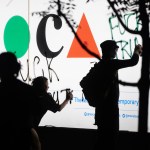INNOCENCE CLINIC
TRANSCRIPT AND CAPTION CORREX
https://vimeo.com/879554743/36ee08e712
11/17/23
In Michigan,
more than
1,000 people
are estimated to be
wrongfully incarcerated
ANTHONY KYLES
WRONGFULLY INCARCERATED
FOR 25 YEARS
It felt horrible to, you know, to be placed in prison for a crime that I had nothing to do with, didn’t even know anything about.
TONIA MILLER
WRONGFULLY INCARCERATED
FOR 18 YEARS
It was so quickly that I was found guilty. I honestly didn’t have hope at that point.
The U-M Law School’s
Michigan Innocence Clinic,
the nation’s first non-DNA
innocence clinic,
is helping the
wrongfully
incarcerated
to prove
their innocence
RICHARD PHILLIPS
WRONGFULLY INCARCERATED
FOR 46 YEARS
I was not supposed to be in prison. I didn’t do anything wrong and I wanted out. I would start
drawing things that I would see in newspapers, articles, real-life events
create my own world of art. Psychologically, it took me away from the madness of doing time, being in prison, away from my kids.
DAVE MORAN
PROFESSOR, CO-FOUNDER
& CO-DIRECTOR
Michigan Innocence Clinic
This is a law student clinic, so the emphasis is on letting the law students learn by doing. They do the initial review of each case, they do the investigation of each case.
ELIZABETH COLE
CLINICAL TEACHING FELLOW
& FORMER INTERN
Michigan Innocence Clinic
I argued part of the motion in court during Mr. Phillips’s evidentiary hearing, and it changed everything for me. I realized I wanted to be in court. I wanted to advocate for people.
BRITTANY WARREN
LAW STUDENT & INTERN
Michigan Innocence Clinic
There was this armed robbery first
and then a murder that was committed later, and he was framed for both of them. We got the murder conviction overturned and we were moving quickly on getting his second conviction overturned. It went well.
To see him out and creating his art and thriving in the community is such a joy. It’s an indescribable feeling.
The clinic also
specializes in
wrongful convictions
based on
debunked science
including cases involving
“shaken baby syndrome”
&
accidental fires
labeled as arson
KYLES
They listened to me. That was the main thing that I loved about them because they listened to the things that I had to say. They listened to the case law that I brought to them.
MORAN
Tonia Miller was an 18-year-old high school senior in 2001 when her infant baby, who had been very sickly for weeks, suddenly stopped breathing and died. And the medical examiner performed an autopsy on Tonia’s infant daughter and concluded that the baby had been killed by shaken baby syndrome.
MILLER
Being 18 with two young kids, having absolutely no experience whatsoever with the medical field, with the justice system, I was very vulnerable. The students would all come and I would retell my story. Everybody came in with fresh eyes. They all had their own perspective, their own questions. And I think collectively, between all of them, they were the ones who ultimately won this.
The Michigan
Innocence Clinic
has helped exonerate
more than
40
innocent people
KYLES
It was a beautiful feeling to walk out those doors. I just looked at the buildings like “Hmmm…it’s over with.”
PHILLIPS
The University of Michigan Innocence Clinic is responsible for saving my life, and there’s no simpler way that I can put that.
Video Produced by Jennifer Howard , Michigan Media
All photos by Eric Bronson, Michigan Photography
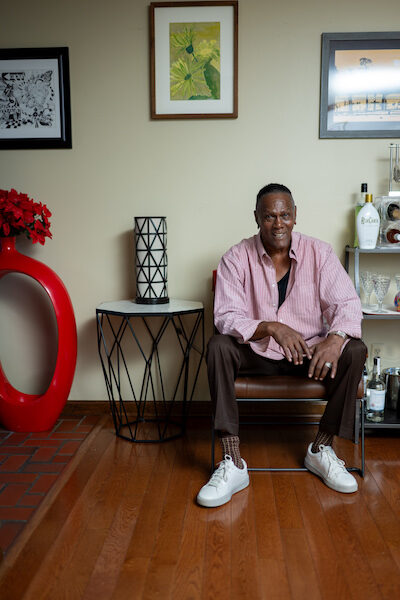
By Jared Wadley, Michigan News

Richard Phillips, 77, at home. He was exonerated for two crimes that had him imprisoned for 46 years.
FARMINGTON, Michigan—When artist Richard Phillips carefully hangs watercolor paintings in his home, he becomes mentally transported into the nature scenes that appear on his canvas.
“If I’m painting landscapes or waterfalls, I’m not in prison,” said Phillips, 77, who created the artwork while incarcerated. “You have to escape (mentally) prison anyway you can, doing things to occupy your time. My paintings were a form of escape.”
Thanks to the legal representation of the University of Michigan Innocence Clinic, he was released from prison in 2017 after a wrongful conviction 46 years ago. In 2019, he secured a $1.5 million settlement from the state of Michigan.
Since 2009, the U-M Law School clinic has been correcting injustices inflicted upon wrongly convicted people, like Oakland County resident Phillips, throughout the state.
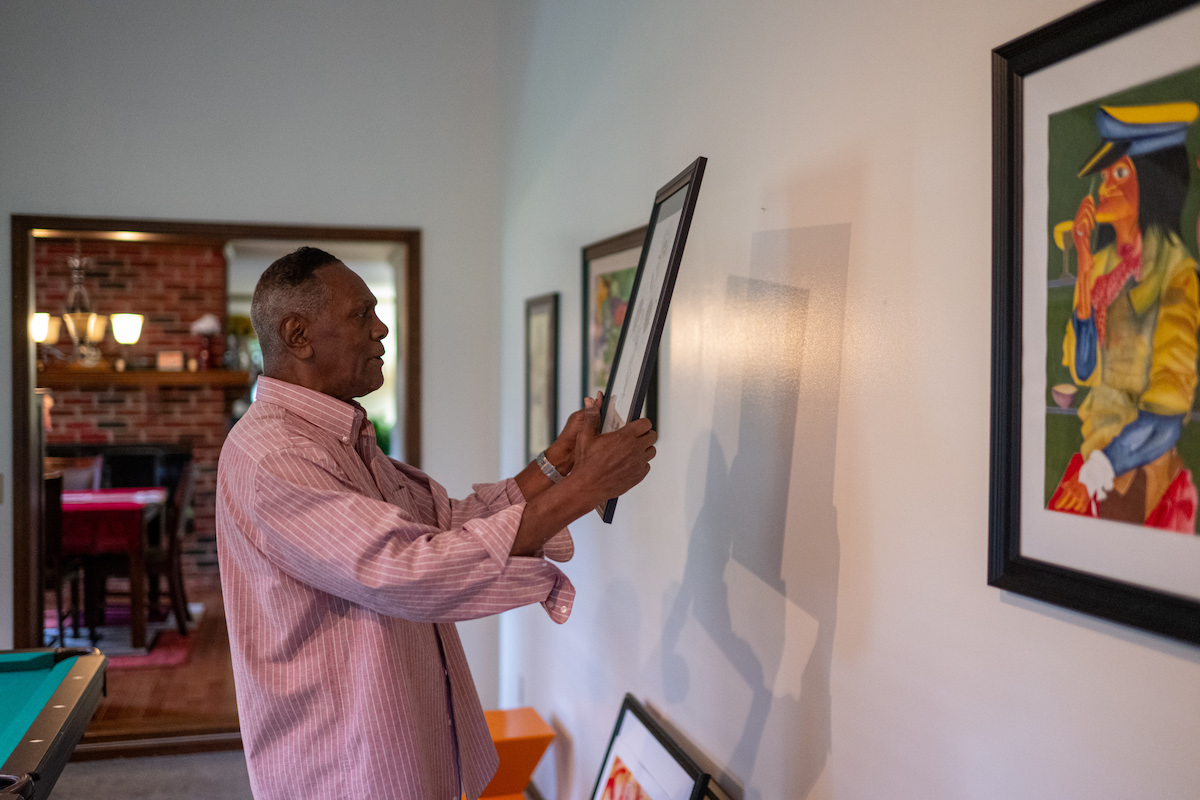
Richard Phillips hangs watercolors he created while incarcerated at his Farmington home.
Lawyers at the clinic tirelessly worked on many cases, winning the release of 41 people who were wrongly convicted of criminal crimes. More than 6,500 Michigan inmates have contacted the clinic for legal help in the last 14 years.

Richard Phillips became an artist while in prison.
Legal experts estimate the national rate of individuals wrongly convicted is between 3% to 5%.
“And so to put that in perspective, that would mean if it’s 1%, even that would mean that we would have right now probably about 350 people in prison in Michigan who are wrongfully convicted and innocent,” clinic co-founder David Moran said. “If it’s 3%, it’d be about 1,000.”
What makes the clinic different is that it exclusively handles non-DNA cases whereas other innocence projects typically deal with DNA cases.
Moran said if the case appears to turn entirely on DNA, they will refer it to the Cooley Innocence Project, which handles DNA cases. With a non-DNA case, the lawyers are looking for new evidence to determine their clients’ innocence, he explained.
How it began
After graduating from Michigan’s Law School in 1991, Moran clerked for a federal judge for a year and spent eight years as an appellate public defender in Detroit. Out of hundreds of cases he handled, five turned out to be exonerations without DNA.
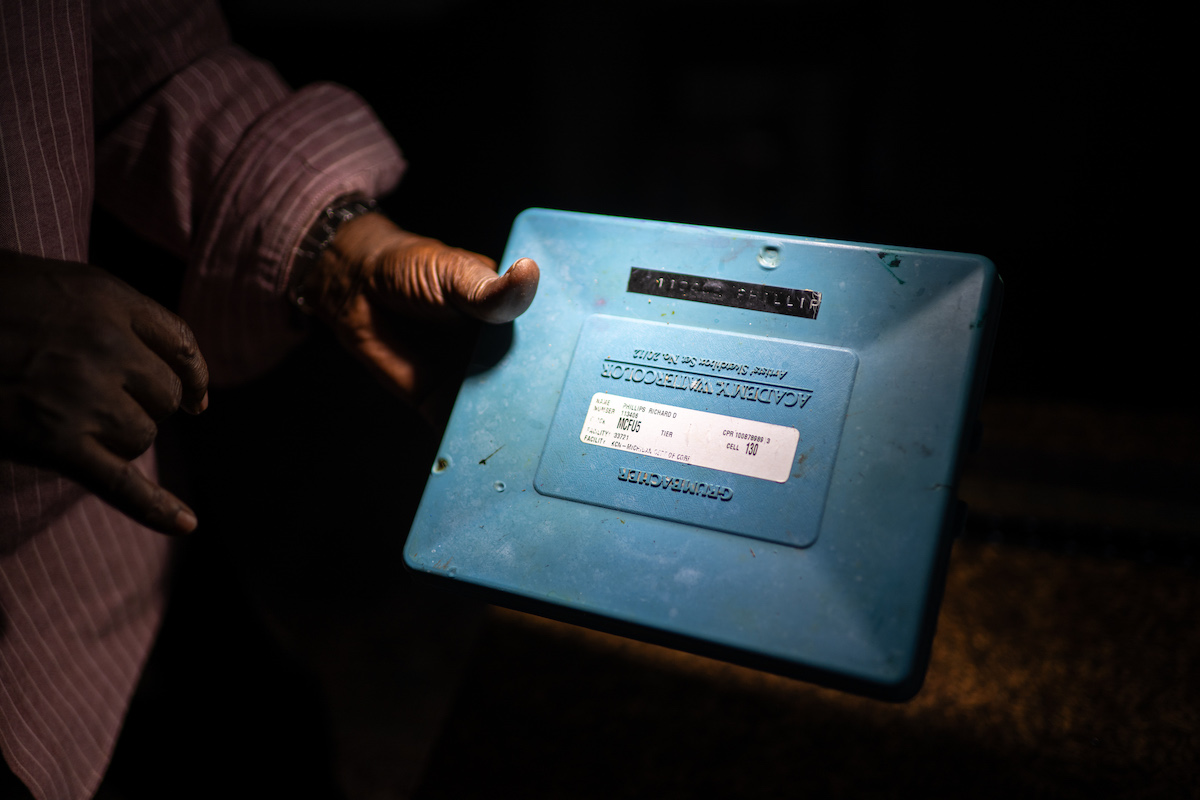
The watercolor painting kit Richard Phillips received in prison that started his love of watercolors.
“That taught me that there was a real problem,” he said. “People were being wrongfully convicted and couldn’t be cleared by DNA. In the vast majority of criminal cases other than sexual assault, there is no DNA to test.”
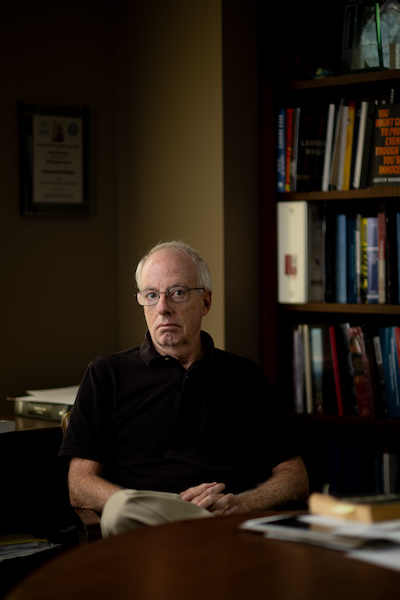
University of Michigan Innocence Clinic co-founder David Moran.
Moran went into academia in 2000, joining the faculty at Wayne State Law School. His research focused on wrongful convictions. Through a series of coincidences, Moran said, he met Bridget McCormick, who was the head of the clinical department at U-M.
She had been a former public defender from New York who had also had cases of wrongful conviction. They decided to start a non-DNA innocence clinic at U-M, the first of its kind in the country. She retired last year as a Michigan Supreme Court judge.
“We decided we needed a clinic that would do the hard investigative work to see if the person was wrongfully convicted and we could prove it,” he said.
The process
The clinic screens hundreds of applications a year investigating one out of 10, and the process involves three steps.
- The lawyers receive a letter from an inmate and then send a questionnaire.
- Two student attorneys read the completed questionnaire and each write a memo about the case. One of the three supervising attorneys decides whether they should “further investigate” the case.
- The case is given to two student attorneys who will investigate the case by reading the trial transcript, speaking with lawyers and police, filing FOIAs, visiting the crime scene, consulting with experts, looking for eyewitnesses and more until they get to the point where they are firmly convinced that the defendant is innocent and they have the evidence to prove it. At that point, they accept the case for litigation. Only about one out of 10 further investigations become accepted cases, so about 1 out of 100 applications become accepted cases).
Many of the clinic’s cases have involved murder and arson. The men and women have served a few months to 46 years in prison, such as Richard Phillips. He spent the longest time wrongly incarcerated for two crimes before his exonerations.
“If the Innocence Clinic hadn’t taken my case, I would not be exonerated – I would have served the last two years of my sentence. I wouldn’t be where I’m at today.”
~ Tonia Miller, who was wrongly convicted in 2000 for the death of her baby.
Phillips was convicted of murder in 1972 and exonerated in March 2018. In a separate armed robbery case, he had been convicted in 1971 and exonerated in 2022. His best friend, Fred Mitchell, falsely implicated Phillips in both crimes because they looked similar.
The clinic represented Phillips in 2014 and – through the evidence – proved Mitchell framed their client. Phillips points to Moran as the person responsible for his living in a comfortable three-bedroom home rather than a restrictive prison cell.
“Dave Moran probably saved my life,” he said while standing in his den adorned with framed drawings that he made while incarcerated.
Phillips also appreciated the efforts of several law students who worked on his case.
Law students represent clients
The Innocence Clinic is one of 16 clinics at the Law School, and students act as attorneys.
“Under the Michigan court rules, a student attorney can do everything a lawyer can do,” such as go to court, draft contracts or conduct negotiations on behalf of clients, Moran said. The exception would be arguing cases in the Michigan Supreme Court.
Other states don’t have the same student practice rule, but they could work behind the scenes doing investigations and talk to experts, Moran explained.
Michigan Law students receive guidance from Moran, clinical assistant professor of law Imran Syed and clinical fellow Elizabeth Cole.
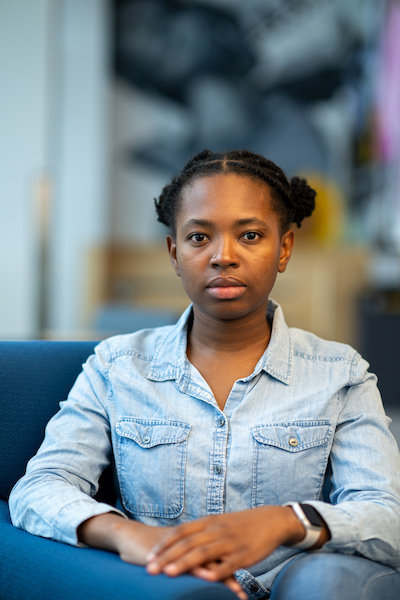
U-M law student Brittany Warren, who worked on the Phillips case.
Law student Brittany Warren, who worked on the Phillips case, said juggling legal work and taking classes occupy much of her time.
“You have to be committed to (the clients). If something comes up (in the case), it’s going to take priority over whatever you have going on,” said Warren, who is from Jamaica and plans to work on complex litigation and innocence cases at a Washington, D.C. law firm after graduation.
Cole, who worked in the clinic as a student in 2017, said students make an impact on the cases, as well as those connected to their clients.

U-M Innocence Clinic clinical fellow Elizabeth Cole.
“There’s something about giving back not only to the community at large, but our clients and their families,” she said. “Our students … see that impact and how they can make a difference in not just one person’s life, but the state overall.”
Impact
The impact is not only seen with the clients and their families but others who play a role in helping prisoners get justice.
That was the case of the Ballett family, whose husband and father Roy – a retired Kalamazoo County detective – contacted Moran about imprisoned Jeff Titus. Titus was wrongfully convicted in 2002 for the murder of two men by shotgun blasts in late 1990 at a state game area near Titus’s farm in Kalamazoo County. Roy Ballett passed away before seeing his 2023 release.
Ballett’s sons James, who lives in Van Buren County, and Dan, a resident of Kalamazoo County, said their father was honest and took pride in every case he handled. Based on the evidence, Ballett – who had been the original detective on the case — knew Titus was innocent because the latter was 27 miles away when the crime happened.
“Any other person may have just left things alone; not Roy Ballett,” James Ballett said. “He saw a wrong, and insisted it be corrected. There was nothing for him to gain from this except the truth and another man’s … freedom.”
James Ballett said his father, who spent 31 years with the sheriff’s department before retiring in 1995, visited Titus in prison and talked to him by phone, telling him that he would someday be free.
Another prisoner who desperately needed help from the clinic was Tonia Miller, who was convicted in early 2003 for the death of her baby Alicia. Prosecutors believed the child had been a victim of shaken baby syndrome now referred to as abusive head trauma based on the information presented by doctors.

Tonia Miller was convicted in early 2003 for the death of her baby Alicia, but the Innocence Clinic proved that the hospital made an error in determining the cause of her death.
The former Battle Creek mother had called an ambulance for her child when she suddenly stopped breathing. The child was diagnosed with pneumonia and transferred to another hospital for respiratory care due to lack of proper equipment. It was at the second hospital that child protective services were notified. She had been charged with and convicted of second-degree murder.
“I was just dumbfounded,” Miller explained, stating that her incarceration left her then two-year-old child without a full-time mother.
About 10 years into her incarceration, someone who believed she was innocent sent her application to present her case for the clinic. Years later, the clinic agreed to review the case, but the process lasted another four years before she became a client.
The student lawyers gathered affidavits from her family, friends and neighbors, as well as medical records to prove her innocence. Leading medical experts testified at a 2020 evidentiary hearing that the child actually died from pneumonia, which caused a lack of oxygen in the brain.
A judge vacated Miller’s conviction in early 2021, and she was fully exonerated when the prosecution dropped charges on Aug. 30, 2021.
“If the Innocence Clinic hadn’t taken my case, I would not be exonerated – I would have served the last two years of my sentence. I wouldn’t be where I’m at today.”

Since leaving prison, Tonia Miller has cherished her freedom and spends time with family. She has traveled to the Grand Canyon, gone zip lining, kayaking and even spontaneously jumped from a plane.
After moving to Kentucky for about 18 months, Miller recently moved back to Michigan to spend time with family. Since leaving prison, she has cherished her freedom. She has traveled to the Grand Canyon, gone zip lining, kayaking and even spontaneously jumped from a plane.
Miller also plans to continue her involvement with the clinic. One effort is starting a letter-writing campaign to connect with those who are incarcerated for cases similar to hers.
“It meant the world to me to get letters from people who believed in me,” she said. “I want to remind them that they are not forgotten.”

Tonia Miller plays with her niece. She also plans to continue her involvement with the Innocence Clinic by starting a letter-writing campaign to connect with those who are incarcerated for cases similar to hers.
This post was originally published on this site be sure to check out more of their content.




